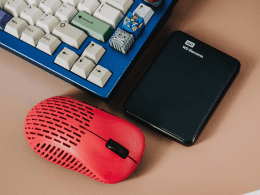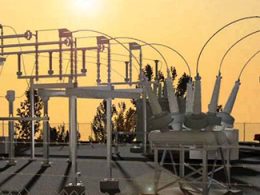Latest Trends in Connected Home Devices
The connected home, often referred to as a smart home, is rapidly evolving with the integration of new technologies that enhance convenience, security, and efficiency. As more devices become interconnected, homeowners are enjoying unprecedented levels of control and automation. This article explores the latest trends in connected home devices, examining their impact on daily living, and provides a competitive and analysis table to help you make informed decisions about the best products for your home.

Latest Trends in Connected Home Devices
- Voice-Controlled Assistants
Overview: Voice-controlled assistants like Amazon’s Alexa, Google Assistant, and Apple’s Siri have become central hubs in smart homes. They enable users to control various devices through voice commands, streamlining the user experience.
Features:
- Integration: Compatible with a wide range of smart devices.
- Functionality: Control lights, thermostats, security systems, and more.
- Advanced AI: Continuous improvements in natural language processing and contextual understanding.
- Smart Home Routines: Create customized routines for different times of the day or specific commands.
Pros:
- Hands-free control and automation.
- Extensive compatibility with smart devices.
- Regular updates improve functionality.
Cons:
- Privacy concerns regarding data collection.
- Reliance on stable internet connectivity.
- Smart Lighting Solutions
Overview: Smart lighting systems have evolved from basic remote-controlled bulbs to sophisticated systems that offer customizable color and intensity, energy efficiency, and integration with other smart home devices.
Features:
- Color Customization: Choose from millions of colors and shades.
- Scheduling: Set lighting schedules or control remotely via apps.
- Energy Efficiency: LED technology reduces energy consumption.
- Integration: Works with voice assistants and other smart home systems.
Pros:
- Enhances ambiance and mood lighting.
- Energy-efficient and cost-effective.
- Integration with automation systems.
Cons:
- Initial setup costs can be high.
- Complex systems may require technical know-how.
- Smart Security Systems
Overview: Modern smart security systems provide comprehensive protection for homes with features like real-time video monitoring, motion detection, and smart locks.
Features:
- Video Surveillance: High-definition cameras with live streaming capabilities.
- Motion Detection: Alerts and notifications for unusual activity.
- Smart Locks: Remote access and control of door locks.
- Integration: Compatibility with voice assistants and other smart devices.
Pros:
- Enhanced security with real-time monitoring.
- Remote access and control.
- Integration with other smart home systems.
Cons:
- Subscription fees for cloud storage and advanced features.
- Potential privacy concerns with constant monitoring.
- Smart Thermostats
Overview: Smart thermostats offer advanced climate control by learning user preferences and adjusting settings automatically to optimize energy use and comfort.
Features:
- Learning Algorithms: Adapts to user habits and preferences.
- Remote Control: Adjust settings via smartphone apps.
- Energy Reports: Provides insights on energy consumption.
- Integration: Works with voice assistants and other smart home devices.
Pros:
- Improved energy efficiency and cost savings.
- Convenient remote control and automation.
- Personalized climate settings.
Cons:
- Initial cost can be high.
- Compatibility issues with some heating and cooling systems.
- Smart Appliances
Overview: Smart appliances are revolutionizing home life by offering advanced features like remote control, diagnostics, and integration with smart home systems.
Features:
- Remote Control: Operate appliances from anywhere using smartphone apps.
- Diagnostics: Provides alerts and troubleshooting information.
- Integration: Syncs with other smart home devices for automation.
- Energy Efficiency: Monitors and optimizes energy use.
Pros:
- Increased convenience and efficiency.
- Advanced diagnostics and troubleshooting.
- Integration with smart home ecosystems.
Cons:
- High upfront costs.
- Potential compatibility issues with existing appliances.
Competitive Table
| Feature / Model | Voice-Controlled Assistants | Smart Lighting Solutions | Smart Security Systems | Smart Thermostats | Smart Appliances |
| Integration | High, with multiple devices | High, with voice assistants | High, with cameras, locks | High, with HVAC systems | High, with various appliances |
| Customization | Extensive voice commands | Color, brightness, schedules | Cameras, locks, sensors | Temperature settings, schedules | Appliance functions, settings |
| Energy Efficiency | N/A | High (LED technology) | N/A | High, with energy reports | High, with energy monitoring |
| Remote Control | Yes, via apps | Yes, via apps | Yes, via apps | Yes, via apps | Yes, via apps |
| Cost | Moderate | High (initial setup) | High (systems and subscriptions) | High (initial cost) | High (initial cost) |
| Privacy Concerns | Yes, data collection | Minimal | Yes, with constant monitoring | Minimal | Minimal |
| Pros | Hands-free, extensive integration | Ambiance control, energy-efficient | Enhanced security, automation | Energy savings, remote control | Convenience, advanced features |
| Cons | Privacy concerns, reliance on internet | High setup costs, complexity | Subscription fees, privacy concerns | High initial cost, compatibility | High upfront costs, compatibility |
Analysis Table
| Aspect | Voice-Controlled Assistants | Smart Lighting Solutions | Smart Security Systems | Smart Thermostats | Smart Appliances |
| Integration | Extensive, seamless | High, with smart home systems | Extensive, seamless | High, with HVAC systems | Extensive, with various devices |
| Customization | Extensive | High, customizable | High, with multiple options | High, personalized settings | High, with various functions |
| Energy Efficiency | N/A | High | N/A | High, energy reports | High, monitoring and optimization |
| Remote Control | Comprehensive | Comprehensive | Comprehensive | Comprehensive | Comprehensive |
| Cost | Moderate | High | High | High | High |
| Privacy Concerns | Significant | Minimal | Significant | Minimal | Minimal |
| Pros | High convenience and integration | Excellent for ambiance and efficiency | Superior security features | Improved efficiency and control | High convenience and advanced features |
| Cons | Privacy issues, internet dependence | High cost, complexity | Costly, privacy issues | High cost, compatibility issues | Expensive, potential compatibility issues |
Conclusion
The latest trends in connected home devices reflect a growing emphasis on convenience, efficiency, and security. Voice-controlled assistants, smart lighting solutions, smart security systems, smart thermostats, and smart appliances are at the forefront of this evolution, offering advanced features that enhance everyday life.
When choosing connected home devices, consider factors such as integration with existing systems, customization options, energy efficiency, and cost. Each category of device has its unique advantages and potential drawbacks, so evaluate your specific needs and priorities to select the best options for creating a smarter, more efficient home.
Whether you’re interested in improving home security, optimizing energy use, or adding convenience to daily routines, the latest connected home devices offer innovative solutions to meet your needs and elevate your living experience.












